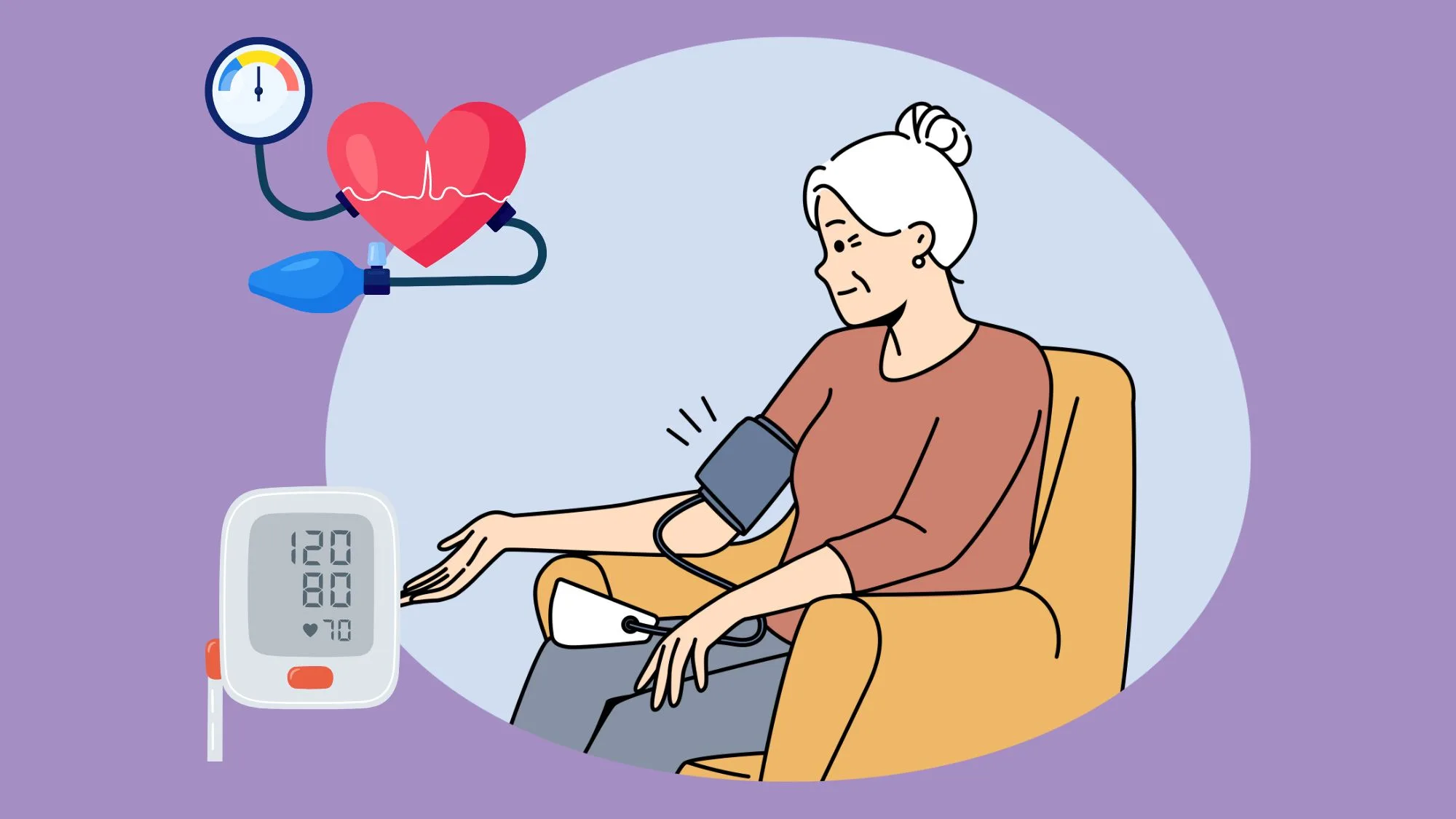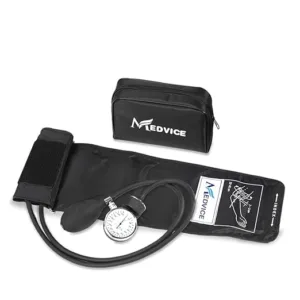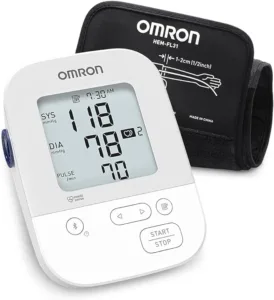
Blood pressure is an essential measure of our cardiovascular health. By monitoring our blood pressure regularly, we can gain valuable insights into our overall well-being and detect potential health issues early on. In this comprehensive guide, to blood pressure graph we will explore the world of blood pressure loggers, their importance, types, and how to effectively use them to track and interpret your BP readings.
Understanding Blood Pressure: A Brief Overview
Blood pressure monitors, also known as blood pressure loggers, are indispensable tools for using blood pressure correctly and monitoring cardiovascular health. These devices provide accurate measurements of systolic and diastolic blood pressure, allowing individuals to track their blood pressure readings over time and detect any abnormalities.
Before diving into the details of blood pressure loggers, let’s familiarize ourselves with the basics. Blood pressure is the force exerted by your blood against the walls of your blood vessels. It consists of two measurements: systolic pressure and diastolic pressure. The systolic pressure represents the force when your heart contracts and the diastolic pressure represents the force when your heart is at rest between beats.
Understanding blood pressure is essential for maintaining overall health and well-being. It serves as a vital indicator of cardiovascular function, reflecting the efficiency of your heart’s pumping action and the health of your blood vessels. Monitoring blood pressure regularly can provide valuable insights into your cardiovascular system’s performance and help identify potential issues early on.
What is Blood Pressure?
Blood pressure is usually expressed as two numbers, such as 120/80 mmHg (millimeters of mercury). The first number (systolic pressure) indicates the maximum pressure in your arteries during a heartbeat, while the second number (diastolic pressure) represents the minimum pressure between beats.
These two numbers offer a comprehensive view of the pressure exerted on your blood vessels throughout the cardiac cycle. Systolic pressure reflects the force when the heart contracts to pump blood into the arteries, while the measured diastolic pressure indicates the difference in the pressure when the heart relaxes and refills with blood. Both measurements are crucial for assessing cardiovascular health and detecting potential issues that may arise.
Importance of Monitoring Blood Pressure
Regular monitoring of your blood pressure is crucial for maintaining good health. Elevated blood pressure can lead to serious conditions such as heart disease, stroke, and kidney problems. By keeping track of your blood pressure, you can detect any fluctuations or abnormalities and take the necessary steps to manage your cardiovascular well-being.
Consistent monitoring of blood pressure empowers individuals to make informed decisions about their health. By tracking changes in blood pressure readings over time, individuals and healthcare providers can collaborate on effective treatment plans and lifestyle modifications to promote heart health and reduce the risk of cardiovascular complications. Taking a proactive approach to blood pressure management can significantly improve overall quality of life and reduce the likelihood of developing chronic conditions associated with hypertension.
Introduction to Blood Pressure Loggers
Now that we understand the significance of monitoring blood pressure, let’s explore the world of blood pressure loggers.
When it comes to managing your health, keeping track of your blood pressure is crucial. This is where blood pressure loggers come into play, offering a convenient and reliable way to monitor your cardiovascular health.
What is a Blood Pressure Logger?
A blood pressure logger, also known as a blood pressure monitor or sphygmomanometer sensor, is a device used to measure and record your blood pressure. It provides an accurate reading of your blood pressure, allowing you to monitor changes and track trends over time.
These devices typically consist of a cuff that is wrapped around your arm, a pressure sensor to measure your blood pressure, and a display screen to show the readings. Some advanced blood pressure loggers can even connect the device to mobile apps or cloud services, making it easier to store and analyze your data.
Benefits of Using a Blood Pressure Logger
Using a blood pressure logger offers several advantages. Firstly, it enables you to take proactive control of your health by having real-time access to your blood pressure readings. Secondly, it provides accurate and reliable measurements, ensuring the information you receive is trustworthy. Lastly, blood pressure loggers save your readings, allowing you to track patterns and share valuable data with your healthcare provider for better management of your overall health.
By incorporating a blood pressure logger into your daily routine, you can gain valuable insights into your cardiovascular health and make informed decisions to improve your well-being. These devices serve as a proactive tool in managing conditions such as cardiovascular disease suchas hypertension, helping you and your healthcare team work together towards achieving optimal health.
How Blood Pressure Monitors Work
A blood pressure monitor typically consists of a blood pressure cuff, a sensor bp cuff that measures arterial pressure, and a display screen to show the readings. To accurately measure blood pressure, the cuff is wrapped around the upper arm, positioned at heart level, and inflated to compress the brachial artery. The sensor then detects the pressure beats as the cuff deflates, providing precise measurements of systolic and diastolic pressure.
Types of Blood Pressure Loggers
Blood pressure loggers come in various forms, each with its own features and functionalities. Let’s explore two common types: manual blood pressure loggers and digital blood pressure loggers.
When it comes to monitoring blood pressure, accuracy and ease of use are key factors to consider. Understanding the different types of blood pressure loggers available can help individuals make informed decisions about their health management.
Manual Blood Pressure Loggers
Manual blood pressure loggers, often referred to as aneroid monitors, consist of an inflatable cuff, a gauge, and a stethoscope. To measure your blood pressure, you wrap the cuff around your upper arm and use the stethoscope to listen for your heartbeat while slowly releasing the air from the cuff. Manual blood pressure loggers require some practice to achieve accurate readings, but they are affordable and portable.
One of the advantages of using a manual heart rate or blood pressure logger is the tactile experience it provides. By listening to your heartbeat through the stethoscope, you can actively engage in the monitoring process and gain a deeper understanding of your body’s rhythms.
 Try MEDVICE Manual Blood Pressure Cuff
Try MEDVICE Manual Blood Pressure Cuff
Digital Blood Pressure Loggers
Digital, blood pressure cuff and loggers, on the other hand, offer a more convenient and user-friendly experience. These devices have an automated cuff or sensor that inflates and deflates on its own, displaying your blood pressure readings on a digital screen. Digital blood pressure loggers often come with additional features such as memory storage, irregular heartbeat detection, and the ability to sync with smartphone apps, like CareClinic, for seamless data management.
With the advancement of technology, digital blood pressure loggers have become increasingly popular due to their ease of use and ability to provide quick and accurate readings. The integration of additional features in digital loggers enhances the overall blood pressure monitoring experience, allowing individuals to track their blood pressure trends over time and share data with healthcare providers for better management of their health.
 Try OMRON Silver Blood Pressure Monitor
Try OMRON Silver Blood Pressure Monitor
Choosing the Right Blood Pressure Monitor for You
Once the blood pressure readings are obtained, they can be recorded and stored for future reference. Many blood pressure monitors come with features such as memory storage and the ability multiple users to share measurements, making it easy for individuals to track their progress and share data with their healthcare provider.
Tips for Using Your Blood Pressure Monitor Effectively
It’s important to note that blood pressure monitors should be clinically validated to ensure accurate results. By using a medically validated blood pressure monitor and following proper measurement techniques, individuals can effectively monitor their cardiovascular health and take proactive steps to maintain optimal blood pressure levels.
How to Use a Blood Pressure Logger
Now that we know about the different types of blood pressure loggers, let’s explore how to use them effectively to track your blood pressure readings.
Using a blood pressure logger is a simple yet crucial step in monitoring your cardiovascular health. By following a few key steps, you can ensure accurate and reliable readings that can help you and your healthcare provider make informed decisions about your well-being.
Step-by-Step Guide to Using a Blood Pressure Logger
- Find a quiet and comfortable place to take your blood pressure measurement.
- Bare your upper arm and rest it on a flat surface, such as a table, with your palm facing up.
- Wrap the cuff around your upper arm, ensuring it is snug but not too tight.
- Position the cuff at heart level and rest your arm comfortably.
- Press the start button on your blood pressure logger, or follow the device’s instructions.
- Remain still and quiet during the measurement.
- Record your blood pressure reading and the date and time of the measurement. If using the CareClinic app, you can easily save and organize your readings on your smartphone.
After taking your blood pressure reading, it’s essential to interpret the results accurately. Understanding what the numbers mean can provide valuable insights into your cardiovascular health. For your blood pressure numbers beats for instance, a reading of 120/80 mmHg is considered normal, while consistently high readings may indicate hypertension, requiring further medical attention.
Tips for Accurate Readings
- Avoid caffeine, smoking, and exercise for at least 30 minutes before measuring your blood pressure.
- Ensure you are in a relaxed state and have emptied your bladder before taking a measurement.
- Try to measure your blood pressure at the same time each day for consistency.
- Familiarize yourself with the instructions specific to your blood pressure logger for accurate and reliable readings.
Consistency is key when monitoring your blood pressure. By establishing a routine and following these tips, you can maintain a comprehensive log of your readings, enabling you to track trends over time and make informed decisions about your cardiovascular health.
Interpreting Your Blood Pressure Readings
Now that you have successfully recorded your blood pressure readings, it’s important to understand how to interpret them. Let’s explore the meaning of blood pressure readings and when to seek medical advice.
Understanding Blood Pressure Readings
Normal blood pressure is typically around 120/80 mmHg. However, it’s important to note that optimal blood pressure levels may vary depending on your age, health condition, and other factors. Elevated blood pressure or consistently very high blood pressure readings may require further attention and lifestyle modifications. On the other hand, excessively low blood pressure may indicate underlying health issues and should also be discussed with your healthcare provider.
The Importance of Accurate Blood Pressure Readings
Using a blood pressure monitor correctly is essential for obtaining accurate readings. The tested person should be in a relaxed state, with their arm supported and positioned correctly. Factors such as white coat syndrome and heartbeats affect blood pressure readings, so it’s crucial to ensure the individual is calm and comfortable during the measurement process.
When to Seek Medical Advice
If you notice consistently high or low blood pressure readings, or if your blood pressure suddenly spikes, it is advisable to seek medical advice. Your healthcare provider will be able to analyze your average pressure readings in conjunction with other factors such as your medical history, lifestyle, and overall health to determine the best course of action for maintaining optimal blood pressure levels. Consulting with your doctor or your healthcare provider is especially crucial if you experience symptoms such as dizziness, chest pain, or shortness of breath alongside abnormal blood pressure readings.
By incorporating the use of a blood pressure logger into your daily life and self-care routine, such as the CareClinic app, you can stay proactive in managing your cardiovascular health. Keep track of your blood pressure regularly, follow healthy lifestyle habits, and consult with your healthcare provider whenever necessary. Remember, taking control of your blood pressure is a key step towards a healthier and happier life.
Use the CareClinic App for Blood Pressure Monitors
Take the next step in managing your blood pressure with the CareClinic App, a comprehensive tool designed to simplify your health tracking. The app allows you to log your blood pressure readings, visualize trends over time, and receive reminders for medication and measurement schedules. With its intuitive interface, the CareClinic App makes it easy to maintain an accurate blood pressure diary, which is essential for understanding your cardiovascular health and making informed decisions.
Download the CareClinic App and Manage Diastolic Blood Pressure
By leveraging the CareClinic App’s features, you can gain insights into the effectiveness of your treatment plans and lifestyle changes. The app’s ability to sync with other health data provides a holistic view of your well-being, helping you and your healthcare provider to tailor your health strategies for the best outcomes. Don’t wait to prioritize your heart health; install the CareClinic App today and embrace a proactive approach to managing your blood pressure.


